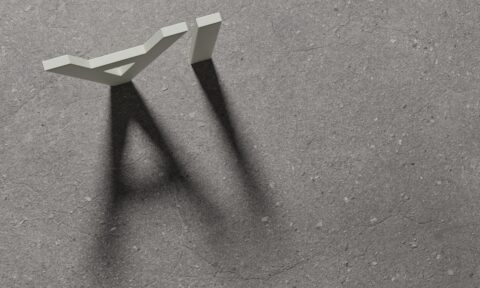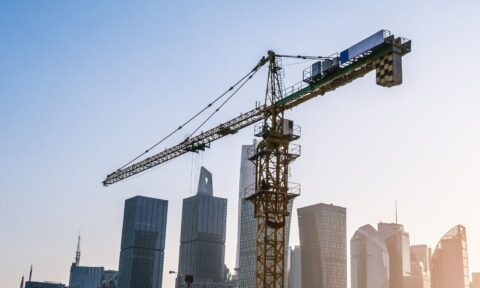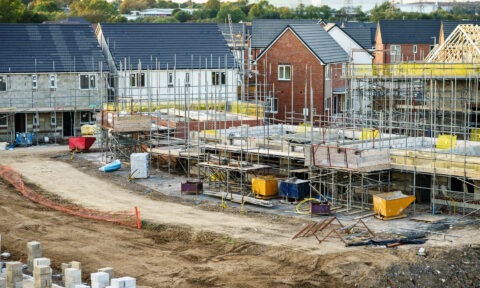Design & Analysis of Floating Wind Turbine Structures
- Wind Turbine Structure Training focuses on design and analysis of floating wind turbines.
- Engineers, researchers, and project managers will benefit from the course.
- Content includes lectures on wind turbine concepts, analysis methods, and design requirements.
- The course covers hydrodynamic design aspects and mooring system analysis for floating wind turbines.
- It provides a balance of theory and practice for innovative learning.
Overview
The Wind Turbine Structure Training course focuses on the design and analysis of floating wind turbines, particularly in deep water environments. Engineers and researchers involved in offshore wind turbine design, project engineers, and safety inspectors will benefit from the course's innovative content and balance of theory and practice. The program covers topics such as floating wind turbine concepts, analysis methods, design requirements, ocean wave analysis, hydrodynamic design aspects, and mooring system analysis. The course spans two days and is led by experienced industry professionals.
Who should attend
Engineers, Researchers, Contracts Engineers, Team Leaders, Conversion Engineers, Project Engineers, Offshore Controls Engineers, Safety Inspectors.
Course Content
ABOUT THE COURSE
Offshore wind development has witnessed a steady growth in the last decade. Floating wind turbines are a promising new technology in the field of offshore wind power development, particularly in deep water. In recent years, significant R&D effort has been spent in conceiving floater designs that are stiff enough to accommodate wind turbines and stable enough to cope with the highly dynamic environments that prevail in deep seas. Concomitantly, great amount of time has also been invested in developing design tools to accurately model and
predict the dynamics of coupling wind turbines to floating structures. The course will deal with various aspects for the design and analysis of floating wind turbines including foundation.
Content of the lectures:
Lecture 1: Overview of Floating Wind Turbine Concepts and Recent Developments
Lecture 2: Analysis Methods for Floating Wind Turbines
Lecture 3: Design Requirements for Floating Wind Turbines
Lecture 4: Ocean Wave Analysis Applied to Floating Wind Turbines
Lecture 5: Wave and Current Loadings for Floating Wind Turbines
Offshore Environmental loads. Wave and current loads estimation by Morison Equation. Force estimation by diffraction methods. Fatigue loading and motion response
estimation of floating wind turbines.
Lecture 6: Hydrodynamic Design Aspects of Floating Wind Turbine Platforms
Brief review of the existing floating offshore wind turbine FOWT;
Platform design: Column stabilized (Semi-Submersible), Spar type, Tension leg platform (TLP);
Design and analysis tools for global performance of FOWT;
Dynamic interaction of turbine, tower, floating platform and mooring system.
Lectures 7 & 8: Mooring System Analysis for FWT – I & II: Catenary & Tension Leg Mooring
Modelling of the mooring system: semi – submersible platform, mooring lines, wind turbine load and environmental load. Intact and damage analysis of the mooring lines and system response. Effect of the variations of the environmental load on the dynamic response of FWT system.
Who Should Attend
Location
Course Syllabus
Day 1
09.00 – 10.30 Lecture 1: Overview of Floating Wind Turbine Concepts and Recent Developments Mr Trevor Hodgson
10.30 – 11.00 Break
11.00 – 12.30 Lecture 2: Analysis Methods for Floating Wind Turbines Mr Trevor Hodgson
12.30 – 13.30 Lunch
13.30 – 15.00 Lecture 3: Design Requirements for Floating Wind Turbines Mr Trevor Hodgson
15.00 – 15.30 Break
15.30 – 17.00 Lecture 4: Ocean Wave Analysis Applied to Floating Wind Turbines Dr Omar Khattab
Day 2
09.00 – 10.30 Lecture 5: Wave and Current Loadings for Floating Wind Turbines Dr Omar Khattab
10.30 – 11.00 Break
11.00 – 12.30 Lecture 6: Hydrodynamic Design Aspects of Floating Wind Turbine Platforms Dr Omar Khattab
12.30 – 13.30 Lunch
13.30 – 15.00 Lecture 7: Catenary Mooring System Analysis for FWT Dr Omar Khattab
15.00 – 15.30 Break
15.30 – 17.00 Lecture 8: Tension Leg Mooring System Analysis for FWT Dr Omar Khattab
Additional Information
Omar Khattab BSc, MSc, PhD, CEng, FRINA,MSANJ has been an independent consultant since 2007 working for various clients including Brooks Bell Jarret Kierman,Safety at Sea Ltd., Milford Haven Port Authority, Svitzer Marine Ltd., Port of Belfast, Lloyds Register EMEA, Clydeport Operation Ltd. and SACH Solicitors amongst others. Prior to becoming an independent consultant, Dr. Khattab was a lecturer at Alexandria University, Egypt, where he gained his undergraduate degree, for 5years. He obtained his MSc degree in Hydrodynamics from Alexandria University and his PhD from Japan in 1979. He then spent 5 years with the British Ship Research Association (BSRA) as Principal Research Officer at the Naval Architecture Department. During 1988-1993, Dr. Khattab worked in Senior and Management positions at BMT in the Ship Performance Department, the Fluid Dynamics Group and the Hydrodynamic Services at BMT CORTEC Ltd. After this spell at BMT, he returned to lecturing at Southampton Institute where he began as Senior lecturer for 2 years and was quickly promoted to Head of Maritime Technology. Dr. Khattab then moved to Brookes Bell Jarret Kirman in 2000 before beginning work as R & D Manager at Safety at Sea Ltd where he stayed until he began consultancy work. Dr. Khattab is a Fellow of Royal Institute of Naval Architects, a member of Japan Society of Naval Architects as well as a member of Kansai Society of Naval
Architects. His areas of expertise include Ship Grounding and Collision, Hull Form Design, Fluid Mechanics, Ship Construction and Ship hydrodynamics amongst many others. His Consultancy work has included the Investigation of handling behaviour of new generation of Cruise Liners in Miami Harbour and the Design of berthing Jetty for Svitzer tugs in Milford Haven to name but a few.
Mr Trevor Hodgson is in his second spell with Atkins, having been with them in total for well over thirty years. He has spent the majority of this time working in offshore-related areas, both in the technical execution of this work and in the management of teams of engineers to achieve specified goals. He has extensive experience of conceptual and detail design for jacket structures and topsides, including over thirty platforms in SE Asia, and concrete structures in the North Sea and worldwide. His experience encompasses both shallow and deeper water platforms of steel and concrete construction, drilling riser and conductor analysis, semi-submersible and FPSO vessels, high-speed aluminium surface craft, and even peer review for the nuclear industry. He has recently been involved in the development of concepts and detailed designs for the offshore renewable energy market, including wind, wave and tidal energy conversion devices, most recently Wind Turbine Generator (WTG) substructures. He is highly experienced in the application and interpretation of advanced finite element analysis methods for the design process and has used this experience to great effect in the development and support of engineering software, primarily the ASAS: OFFSHORE suite for the oil and gas industry, now part of ANSYS. He is the author of numerous texts on structural design and analysis, was convenor of a panel covering Structural Analysis of Fixed Concrete Platforms for the ISO standard on offshore installations, and lectures for ASRANet and the Universities of Glasgow and Strathclyde on offshore structures and renewables.



